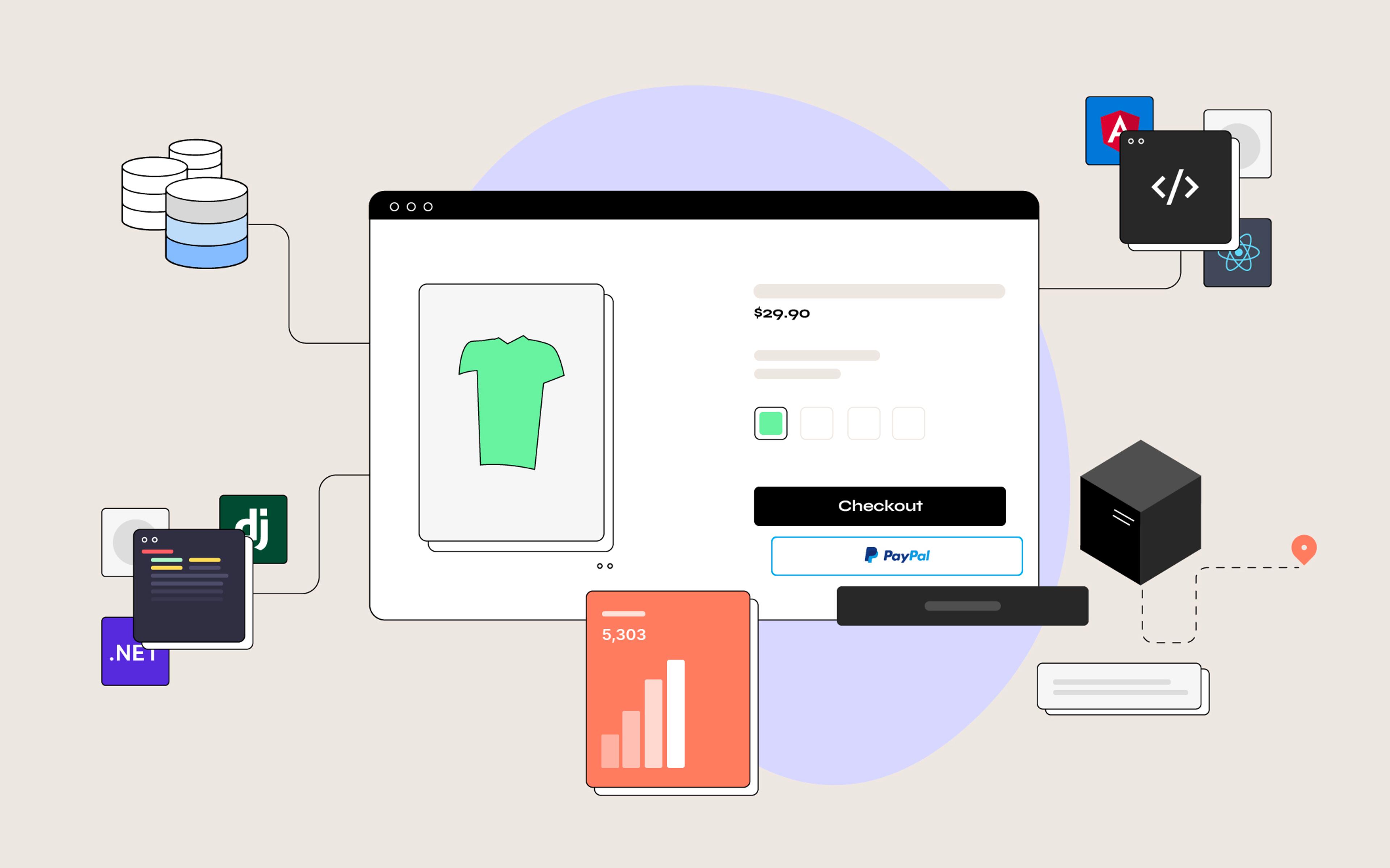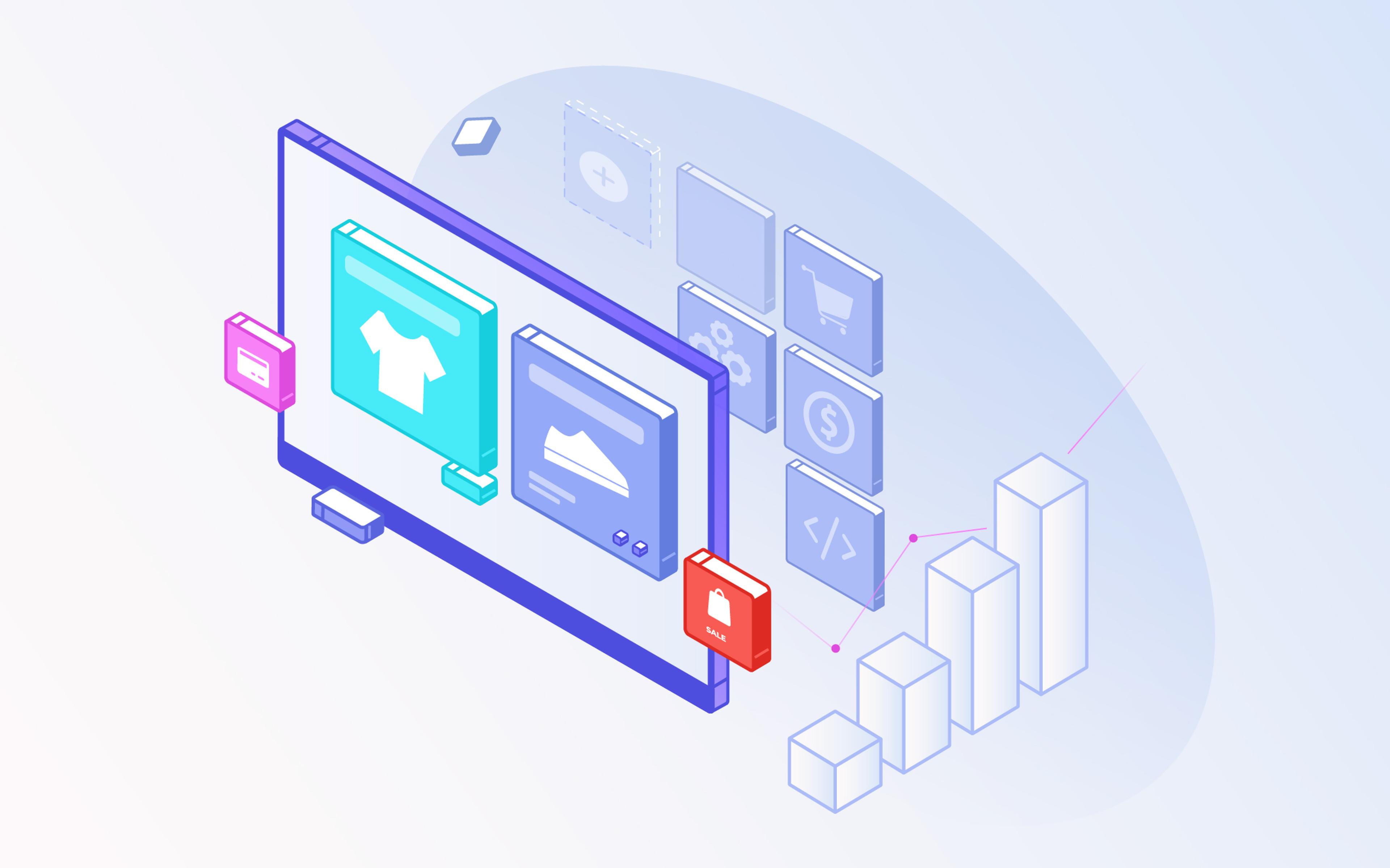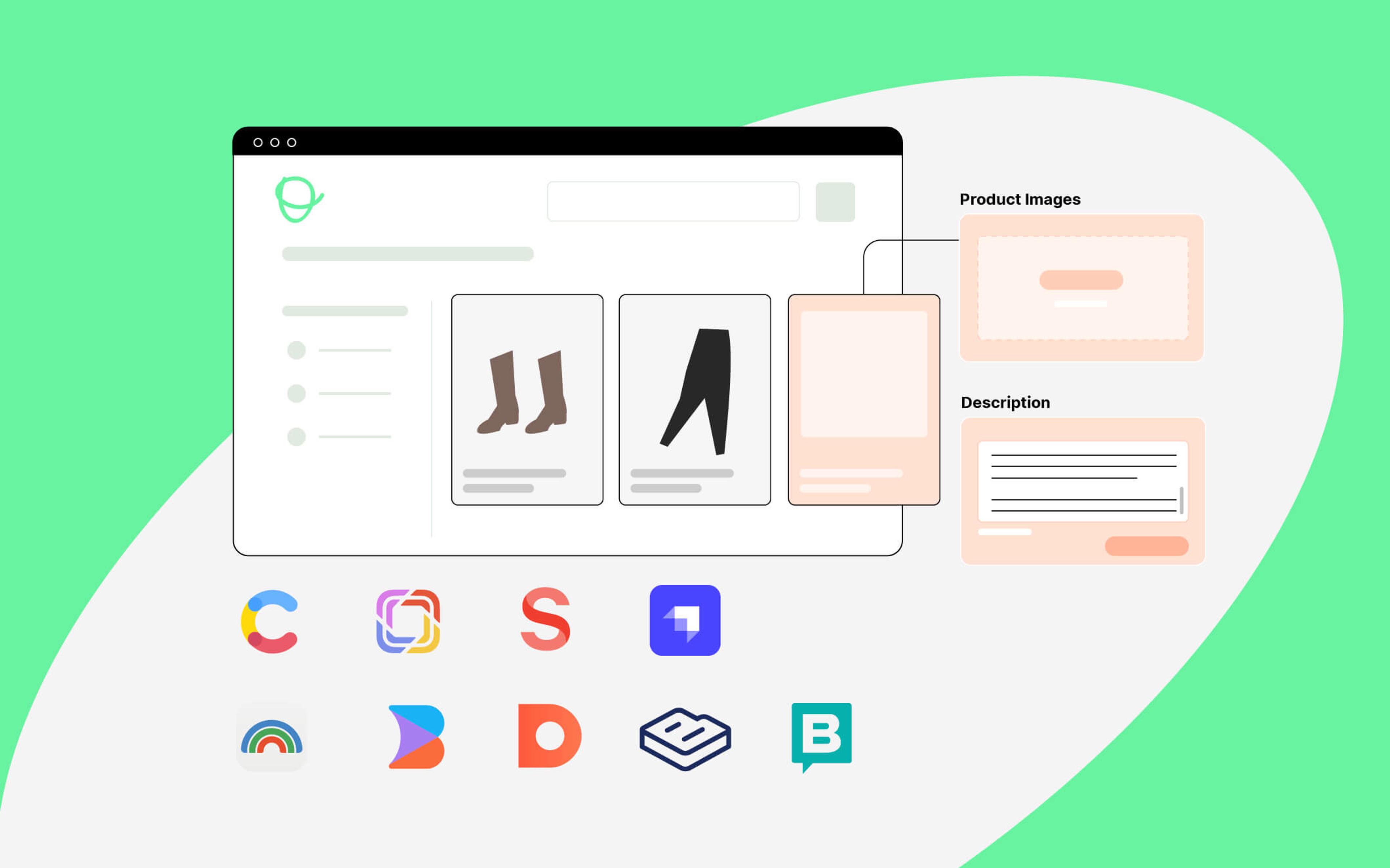eCommerce operators often tell us that picking the right tech stack for your eCommerce brand feels like walking on a tightrope. There are so many tools and technologies to choose from, and making the wrong decision can severely impair your online store’s ability to scale with your business.
In this guide, we’ll look at what a tech stack is, why building it is a critical phase in your brand’s life, and how you can create a tech stack that will support your goals and your brand’s evolving requirements.
What is a tech stack?
In layperson’s terms, a technology stack (“tech stack” for short) is a collection of programming languages, software libraries, frameworks, databases, and online services integrated to deliver a particular user experience.
While some of these technologies are very generic and apply to all kinds of scenarios, others are specific to the eCommerce industry. Here are the basic building blocks of most modern tech stacks:
-
Programming languages: Developers use specific programming languages (e.g., Ruby, JavaScript, PHP, Java, Python) to code the server-side and frontend logic behind your application. Different languages have different properties and capabilities when it comes to popularity, scalability, and developer experience.
-
Libraries and frameworks: These are software packages that make it easier for software developers to implement standard functionality. For instance, most backend programming languages provide Web frameworks that speed up the implementation of Web applications, such as Django for Python or Ruby on Rails for Ruby.
-
Infrastructure: Infrastructure consists of the Web server, database, and other components that run your application’s backend and frontend code and host its data. Depending on your use case and requirements, many different types of infrastructure providers and possible configurations exist: e.g., you may use a relational database like MySQL, or a NoSQL database like MongoDB.
-
SaaS providers: This is a catch-all term to indicate all the third-party software you pay a recurring fee to access. It can be a small piece of your stack, such as an analytics service or automation platform, or a major component, such as the eCommerce platform your brand runs on.
As you may imagine, picking the right mix of frontend and backend technologies, libraries, infrastructure, and SaaS providers requires a lot of experience: First of all, not all components integrate well with each other; secondly, each set of technologies has its pros and cons, which are very context-dependent.
While recommended practices exist, any agency or Web development team pushing the same software stack onto all of their customers is doing them a huge disservice. Using the wrong tech stack can slow down your development process, prevent you from efficiently capitalizing on business opportunities, and hold back your startup from scaling.
In the following paragraphs, we’ll explore the most critical parts of an eCommerce brand’s tech stack and how to make informed decisions when discussing them with your agency or in-house developers.
What are the components of an eCommerce tech stack?

The average eCommerce brand may integrate many tools and technologies to deliver and optimize their customer experience. Let’s look at some of the most common eCommerce technology you might make as an operator or developer.
eCommerce platform
Your eCommerce platform (sometimes called “shopping cart”) is the core of your business. Picking the right eCommerce platform is a critical decision when launching or re-launching your online store and one that you should evaluate from many angles.
There are many players in this space, and they come in different shapes and forms: established solutions such as Shopify and BigCommerce promise reliability and large ecosystems. In contrast, newer solutions such as Swell and Commerce Layer offer flexibility and a more modern approach. Then you have disruptors such as Solidus (which is open-source) and Chord Commerce (which is data-driven), which push for a completely different take on building and operating your brand.
You can learn a bit more about the state of the eCommerce platforms market in our article on headless vs. monolithic eCommerce.
Payment processing
Payment processing is a big part of running an eCommerce business. All eCommerce brands integrate with one or more vendors in the space, called PSPs (Payment Service Providers).
Note that “payment method” and “payment service provider” (or “payment gateway”) are sometimes used interchangeably. Still, they have two different meanings: while a payment method represents a medium the customer uses to pay for goods and services (e.g., credit card, Apple Pay, Google Pay), a payment service provider is a company that builds software to enable specific payment methods. For example, credit cards are one of the most common payment methods in eCommerce. To accept credit card payments, you must partner with a PSP that provides that service, such as Stripe.
You can either decide which payment methods you want to support and then pick the right combination of PSPs, or pick a PSP you want to use and then choose which payment methods you wish to enable among the ones they support.
There’s no right or wrong answer: whether to go one way or the other depends on your market (e.g., US vs. EMEA), business model (e.g., B2C/B2B), customer demographics (e.g., Gen X vs. Gen Z, household income) and industry (e.g., THC products are highly regulated and only supported by specific PSPs).
Logistics
The supply chain experience can make or break a brand’s shopping experience. Especially for DTC, the bar is high, with consumers constantly comparing you with their latest experience and not settling for delivery delays or order mix-ups.
“Logistics,” in the context of an eCommerce operation, encompasses at least three different components, which may or may not be provided by the same vendor:
-
Inventory management: an inventory management system allows you to track the inventory in your warehouse(s). Modern WMSs integrate with your eCommerce platform for real-time stock counts.
-
Shipping management: a shipping management system allows you to generate shipping labels and track your packages’ journey from the warehouse to the customer.
-
Returns management: a returns management system allows you to define your return policies, enables customers to handle returns autonomously, and tracks returns on their way to the warehouse.
You can either build/buy these tools and handle your logistics in-house or partner with a 3PL (third-party fulfillment) vendor to store your inventory and handle all logistics- and fulfillment-related responsibilities on your behalf. Which way to go depends on your company stage, product category, market, and many other factors.
Content management
Depending on your needs, choice of eCommerce platform, and frontend technologies, you may or may not need to pick a content management system (CMS). A CMS allows you to manage the marketing content that appears on your eCommerce website.
Headless CMSs are all the rage nowadays: they allow developers to specify which content types are supported and how they should be presented on screen while still allowing marketers to publish whatever content they want, whenever and wherever they want. This gives your team much power while maintaining a consistent presentation of your content across your storefront, mobile app, and other sales channels.
With that said, headless CMSs are also restrictive: if a particular content module is not supported, your team won’t be able to publish it until a developer implements it. Whether to go with a headless (e.g., Contentful) or monolithic CMS (e.g., Webflow) depends on your scale, technical capabilities, and editorial needs.
For more details, read our article on eCommerce content management.
Marketing
Reaching your customers at the right touchpoints, and offering relevant, personalized information and offers, is an unbeatable advantage of online shopping. Brands can leverage first-party data to create “aha!” moments and magical experiences, but only if they are supported by the right tools.
You will find many marketing tools serving different channels and purposes: some tools are specifically built for email/SMS marketing, while others will be more targeted at social media marketing. Some tools are specifically designed for eCommerce companies; some are generic but do a good enough job of accommodating the needs of an online brand.
Our suggestion? Start simple. Going too aggressively after too many channels might cause you to disperse your efforts. Instead, be very intentional about which channels you’re pursuing, your segmentation strategy, and how to ensure that all the information you have about your customers is being put to full use. Once you have an established strategy, you can start to iterate and experiment.
Customer support
Expectations around customer support (“CS”) have never been so high, and the bar is set even higher for digitally-native brands, which have pioneered a new era of customer support. Customers expect you to be responsive, solve their problems, and go above and beyond to provide a memorable experience.
Different CS software solutions support different channels (e.g., email, SMS, phone, social media), and covering as much ground as possible is critical in implementing a successful customer support strategy. If you have an Instagram account, customers expect their complaints to be answered there, not just by email.
Also, when those customers do reach out, you want to have the correct data at your disposal, so make sure your customer support platform integrates well with the rest of your stack: for example, when a customer reaches out, can you quickly identify them and see what they’ve purchased, and maybe initiate a return from within the CS tool itself? The more manual work you eliminate from the process, the easier it will be for your team to offer stellar support.
Business intelligence
Data is an eCommerce store’s superpower. When a customer buys from you, you instantly get access to a ton of precious information about them and their behavior. You can either aggregate these bits of information to generate valuable insights for your business strategy, drill down to the customer level, or use the data to offer hyper-personalized experiences (ideally, you do both).
Building the right business intelligence (BI) infrastructure is a topic of its own, and entire books have been written about it. Many ready-made solutions allow eCommerce brands to track user behavior and generate fundamental reports and insights about their business. Highly sophisticated solutions enable brands to model their tracking, ETL, and data mining processes.
When it comes to business intelligence, we strongly encourage brands to be intentional about what they’re doing: it’s easy to implement a million different tracking pixels, tools, and reports and still be unable to generate any actionable insights. Start from the questions you want to answer, understand what data will help you answer them, and pick the right tool(s) for the job.
8 tips for building your tech stack

The good news for eCommerce companies is that there are an incredible amount of solutions for launching and operating a brand. The bad news is that, with so many established players and new ones popping up daily, making a choice can feel overwhelming, and the consequences can be disastrous.
Here are eight tips that you should use to build your brand’s tech stack or when evaluating a change in your existing stack:
-
Ease of integration: some solutions will be easier to integrate, thanks to public APIs and built-in connectors. When building your tech stack, pay attention to how the different parts of your stack will communicate. An integrated tech stack means less manual work and a better customer experience.
-
Build vs. buy: buying an existing solution is not always the right choice. If you don’t find any vendors that fit your business needs, consider building an in-house solution that will scale with your brand over time. However, be mindful that this comes with caveats (e.g., higher upfront costs)!
-
Hot vs. boring: should you jump on the latest hot trend or pick a boring solution that has stood the test of time? Unfortunately, there’s no correct answer: sometimes, some experimentation can give you a competitive advantage. But if you overdo it, you can expose your business to unnecessary risk.
-
Pricing: it may seem obvious that you want to evaluate pricing when building your tech stack. However, we encourage you to look beyond the Pricing page, considering the expected lifespan of the solution, the total cost of ownership, and even the opportunity cost.
-
Decision reversibility: some tech stack decisions are more challenging than others to reverse. Switching your customer support tool is rarely too complicated, but migrating to a new eCommerce platform is a big deal. Keep this in mind when making a choice.
-
Compliance: in specific markets and business verticals, you will need to worry about compliance and regulatory issues. Sales tax, the CCPA (in the US), and the GDPR (in the EU) are the usual suspects, but the needs will evolve with your business, so you will need to stay on top of things.
-
Scalability: while everyone loves to talk about scalability in the performance sense (e.g., how well a solution handles high traffic volumes), that is rarely a problem in most scenarios. Instead, understand how well the solution will support your evolving requirements and how likely you will need to move away from it as your brand grows.
-
Customer support: we’ve discussed the importance of offering excellent customer support as a brand–you should hold your vendors to the same standard. Look at SLAs, support channels, and even G2 reviews. Ideally, talk to someone who’s already a customer and get their feedback!
Do you need help building your tech stack?
Hopefully, we’ve convinced you that building your eCommerce brand’s tech stack is no easy feat. It’s a complicated, multi-layered process critical for ensuring your brand’s long-term success.
If you’re launching your brand or need to overhaul your existing brand’s tech stack, we can help. Our eCommerce engineers have worked with tens of brands over the years and can help you make the right decisions, enabling you to move quickly and laying the foundations for aggressive growth.
Reach out to tell us more about your project!



